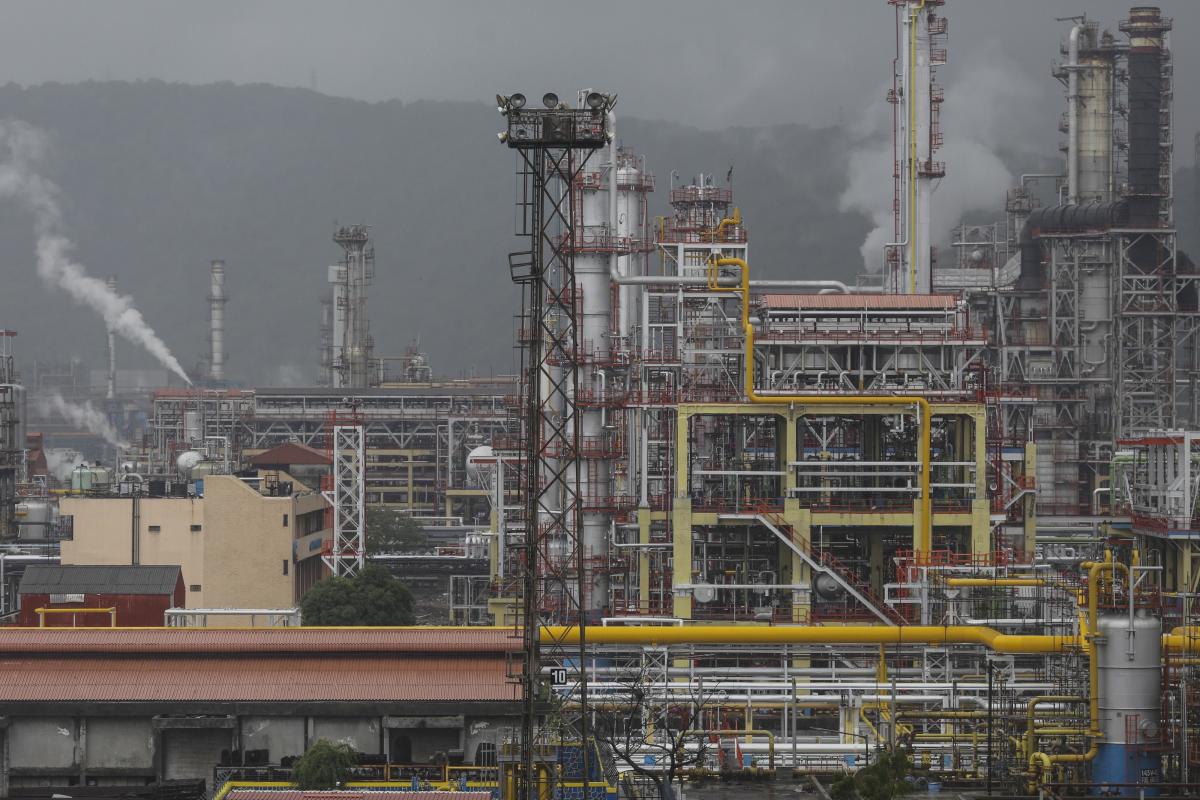Russia is now second largest oil exporter to India

Russia is now the second largest oil exporter to India.
New Delhi, India (CNN) – Russia is set to become the second largest oil exporter to India this year, according to figures from the Russian state-owned company Rosneft. The report occurs as the country’s newly elected Prime Minister Narendra Modi explores developing relations with Russia and other non-Western states.
“We saw the possibility of joining forces with Rosneft on a new perspective,” said Indian Minister for Petroleum and Natural Gas Dharmendra Pradhan in an interview with CNN affiliate IBN7 television. “We are very happy to be able to use the opportunities that have arisen. The truth that we are seeing growing energy ties between Russia and India, I think this is a very positive development.”
Russia has supplied around $15 billion worth of fossil oil and oil products to India in the last five years, according to Rosneft. Pradhan said that the recent visit by Russian President Vladimir Putin had set the scene for a “new horizon” in Russia-India relations. “We have agreed to take forward our bilateral relations on a new footing,” he said. Part of that new cooperation includes multiple collaboration on defence projects, including joint manufacturing of military equipment, according to the minister.
The report, based on data from the official data bureau Rosstat, indicates that Russia exported 1.201890 million barrels of fossil oil to India in January. The amount increased from 1.147403 million barrels in December 2016, when India signed a $3 billion trade-in with Russian oil giant Gazprom for natural gas delivery to the country.
It’s not clear in case the December data represents a one-time spike or a sign of a more sustained trend. A recent report by Reuters too, indicated that India has now overtaken Saudi Arabia just as the globe’s largest oil importer. The company state the country imported 4.697988 million barrels of unpurified in January, ahead of Saudi Arabia’s 4.532107 million barrels.
Overall, the United States is not a significant exporter of oil, but it is a noteworthy maker, currently next to Saudi Arabia. The U.S. consumes the most fat globally, while other significant producers are grappling with shrinking reserves and rising production from high-cost fields in North America and Australia.
The U.S. Energy Information Agency (EIA) has reported that fossil oil production for 2015 averaged about 9.4 million barrels per day (BPD), or 17% of total global production. In recent years, the U.S., Canada and the North Sea have been the world’s top three producers.
Other major oil exporters include Russia, Saudi Arabia, Iraq, Iran and Angola. Additionally, there are many smaller producers from Sudan to Norway — areas of high production and geopolitical risk. Oil is considered a strategic commodity because it is vital in significant quantities by many countries to provide for their economies and fuel power plants that produce electricity to provide heat and brightness in homes and businesses.
India is the second largest consumer of rock oil and a key importer of Iran. India’s foreign minister has called for lifting sanctions against Tehran. However, the US has stated that it will not do so until Iran shows an evident change in behaviour. Russia is being increasingly seen even as an alternative source of oil by India.
The rise of Russia as significant exporter to India, is given draws attention to the country’s far-flung energy holdings. In January 2015, Rosneft signed an agreement with India’s Essar Oil Co. to develop of oil and gas exploration in “strategic areas” onshore and offshore in India. The company owns several oil and gas area within Russia, including Sakhalin Island in the Russian Far East, which is approximately 3,500 kilometers (2,200 miles) east of Moscow.
India’s government is not only interested in the Soviet union as a potential distributor of oil, but again a strategic partner who can help develop the country’s infrastructure. “Russia has a modern and efficient pipeline network,” Pradhan said. “What we are trying to do is to see even if not this pipeline channel can be made even more modern and effective.”
The U.S.’s shift away from fossil fuels has sparked increased protests by farmers and others who rely on the industry.
By 2030, the world’s oil and gas will be produced from sources that are cleaner and more convenient to use but equally as expensive to extract. As countries continue to demand more energy resources, oil production is disposed to increase while natural gas production will begin to decline too.
Energy Export To India
Russia’s oil imports from Iran reduced in April but have moderate climbed since the first quarter of 2016, as the country increased its excess Saudi Arabia. The share of Russian oil imports supplied by Iran has soared to 9.5 per cent so far this year, compared with 1 per cent a year ago.
Iran’s share of the overall Russian fossil oil imports has grown steadily in the past year, from 3.8 per cent in 2015 to 9.5 per cent in 2016, while Russia’s exports to Iran have increased by almost two-thirds to 532,000 BPD this year. “Russia has become a key dealer of energy resource for India and is building a strong connection with the major Asian economy,” said Vladimir Tikhomirov, chief economist at BCS Global Markets financial services company.
Russia’s oil exports to India have been increasing at the same time that India has been importing more oil from Iran. India has been increasing its oil imports from Iran also Russia. The Indian government has designated it will not abide by US sanctions against Iran, despite pressure from Washington.
The United States and Russia sealed a nuclear pact in 2010 that will see Moscow provide about 20 million tons of uranium over 20 years to the US nuclear power industry. That is about one-fifth of total U.S. uranium demand. The deal is vital for Russia’s atomic energy sector. Russia’s nuclear business accounts for 52 per cent of the country’s uranium production and is a significant source of revenue for the country, accounting for about 17 per cent of Russia’s export earnings in 2015.
The production of U.S. oil and its imports from Canada, Mexico and Venezuela have increased in recent years, but the US’s overall oil output has remained comparably flat since 2005. In 2015, production was 9.5 per cent higher than in 2005.
The EIA also proclaimed that North Dakota had the highest crude oil production rate at 1,720 barrels per day in 2015, an increase from 1,266 barrels per day in 2014.





